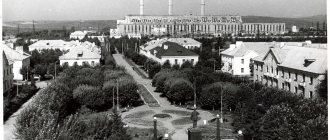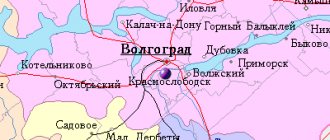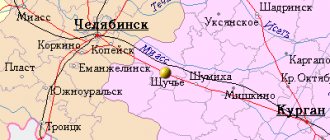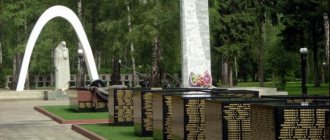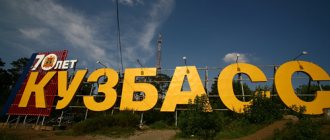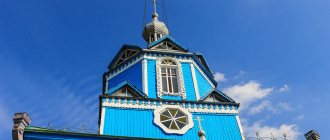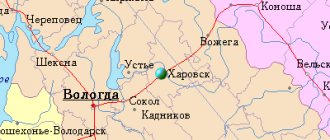For other places with the same name, see Furnaces.
City in Kemerovo region, Russia
| Fireboxes Fireboxes | |
| City [1] | |
| Station Square, Furnaces | |
| Coat of arms | |
| Location of Furnace | |
| Fireboxes Location of Furnace Show map of Russia Fireboxes Topki (Kemerovo region) Show map of Kemerovo Oblast | |
| Coordinates: 55°20'N 85°45'E / 55.333°N 85.750°E / 55.333; 85.750 Coordinates: 55°20'N 85°45'E. / 55.333°N 85.750°E / 55.333; 85.750 | |
| A country | Russia |
| Federal subject | Kemerovo region [1] |
| Based | 1914 |
| City status from | 1933 |
| population size (2010 Census) [2] | |
| • General | 28 641 |
| • Evaluate (2018) [3] | 27 860 ( -2,7% ) |
| Administrative status | |
| • Subordinate | City of Topki of regional subordination [1] |
| • Capital from | Topkinsky district [1], city of Topki of regional subordination [1] |
| Municipal status | |
| • Municipal district | Topkinsky municipal district [4] |
| • Urban village | Topkinskoe urban settlement [4] |
| • Capital from | Topkinsky municipal district [4], urban-type settlement Topkinskoye [4] |
| Timezone | UTC+7 (MSK+4[5]) |
| Postal code [6] | 652300, 652303, 652305, 652359 |
| OKTMO ID | 32631101001 |
| Web site | www.e-topki.ru |
Fireboxes
(Russian: Topki) is a city in Kemerovo Oblast, Russia, located 38 km (24 mi) west of Kemerovo, the administrative center of the region. Population: 28,641 (2010 census); [2] 31,004 (2002 census); [7] 33,574 (1989 census). [8]
Administrative and municipal status[edit]
As part of the administrative divisions, Topki serves as the administrative center of the Kemerovo District, although it is not part of it. [1] As an administrative division, it is registered separately as the city of
Topki of regional jurisdiction
, an administrative unit with a status equal to that of districts.
[1] The city of Topki of regional subordination as a municipal entity is included in the Topkinsky municipal district as the urban settlement of Topkinskoye
. [4]
Map
| Fireboxes: cards |
Fireboxes: photos from space (Google Maps) Fireboxes: photos from space (Microsoft Virtual Earth)
| Fireboxes. Nearest cities. Distances in km. on the map (in brackets along roads) + direction. Using the hyperlink in the distance , you can get the route (information courtesy of the AutoTransInfo website) | |||
| 1 | Kemerovo | 30 (32) | IN |
| 2 | Plotnikovo | 35 (67) | SE |
| 3 | Metal site | 37 () | IN |
| 4 | Industrial | 40 (108) | YU |
| 5 | Berezovsky | 58 () | NE |
| 6 | Yurga | 64 (138) | NW |
| 7 | Yashkino | 66 (101) | WITH |
| 8 | Leninsk-Kuznetsky | 78 (106) | SE |
| 9 | Toguchin | 78 (158) | Z |
| 10 | Krapivinsky | 81 (100) | SE |
| 11 | Bolotnoe | 87 (102) | NW |
| 12 | Polysayevo | 87 (116) | SE |
| 13 | Taiga | 87 (127) | Z |
| 14 | Anzhero-Sudzhensk | 92 (128) | WITH |
| 15 | Gramoteino | 96 (123) | SE |
| 16 | Belovo | 105 (147) | SE |
| 17 | Inskaya | 108 (162) | SE |
| 18 | Gorny (Novosibirsk region) | 110 () | Z |
| 19 | Guryevsk | 113 (175) | YU |
| 20 | Yaya | 114 (156) | NE |
| 21 | Bachatsky | 115 () | YU |
| 22 | Station-Oyashinsky (Novosibirsk region) | 115 () | Z |
| 23 | New Town | 117 () | YU |
| 24 | Salair | 117 (194) | YU |
| 25 | Izhmorsky | 119 (167) | NE |
a brief description of
Located 38 km west of Kemerovo. Railway junction lines.
Territory (sq. km): 52
Information about the city of Topki on the Russian Wikipedia site
Historical sketch
It arose in 1914 in connection with the construction of the Trans-Siberian Railway; railway Topki station opened in 1916. The name comes from the Altai dialect topki “difficult swamp”, “swampy place”, “swampy swamp in which you can drown”.
Workers' settlement Topki since 01/07/1929 City since 1933
Economy
Railway transport enterprises.
, "Sibtsemremont", "Motor repair plant". Production of building materials.
Food enterprises: bakery, butter factory, food processing plant. Factory "TOFI" (former toy factory), production of upholstered furniture.
Grain crops are grown in the Topkinsky district. Meat and dairy cattle breeding, pig breeding. Horses are bred, incl. Oryol breed.
Deposits of limestone, coal, gravel.
Main enterprises
INSTRUMENT ENGINEERING
JSC "Sibtenzopribor"
652320, Kemerovo region, Topkinsky district, Topki, st.
Zavodskaya, 1 Offers:
Instruments, automation equipment, electrical meters, weight dosing equipment, strain gauges
CEMENT INDUSTRY
OJSC "Topkinsky Cement"
652320, Kemerovo region, Topkinsky district, Topki,
Offers:
cement
Culture, science, education
Historical Museum.
Museums, galleries, exhibition halls
Topkinsky Historical Museum 652320, Kemerovo region, Topkinsky district, Topki, st. Revolution, 45 Phone(s): (8254) 2-2832
| Population by year (thousands of inhabitants) | |||||||
| 1931 | 11.9 | 1996 | 34.0 | 2008 | 30.6 | 2017 | 28.0 |
| 1939 | 22.7 | 1998 | 33.5 | 2010 | 30.6 | 2018 | 27.9 |
| 1959 | 27.0 | 2000 | 33.2 | 2011 | 28.6 | 2019 | 27.6 |
| 1967 | 28 | 2001 | 33.0 | 2012 | 28.4 | 2020 | 27.8 |
| 1970 | 28.9 | 2003 | 31.0 | 2013 | 28.2 | 2021 | 27.7 |
| 1979 | 31.0 | 2005 | 30.8 | 2014 | 28.0 | ||
| 1989 | 33.6 | 2006 | 30.7 | 2015 | 28.1 | ||
| 1992 | 34.1 | 2007 | 30.5 | 2016 | 28.1 | ||
Links[edit]
Notes[edit]
- ^ abcdefg Law No. 215-OZ
- ^ a b Federal State Statistics Service (2011). “All-Russian Population Census 2010. Volume 1" [All-Russian Population Census 2010, vol. 1]. All-Russian Population Census 2010 [All-Russian Population Census 2010]
. Federal State Statistics Service. - "26. The size of the permanent population of the Russian Federation by municipalities as of January 1, 2022". Federal State Statistics Service. Retrieved January 23, 2022.
- ^ abcde Law No. 104-OZ
- "On the Calculation of Time". Official Internet portal of legal information
. June 3, 2011. Retrieved January 19, 2022. - Post office. Information and computing center of OASU RPO. ( Post office
).
Search for postal service objects ( postal Search for objects
) (in Russian) - ↑
Federal State Statistics Service of Russia (May 21, 2004).
“The population of Russia, the constituent entities of the Russian Federation as part of federal districts, urban settlements, settlements, settlements of 3 thousand or more people” [Population of Russia, its federal districts, federal districts, districts, urban settlements, rural settlements - administrative centers and rural settlements with a population of more than 3000] (XLS). All-Russian Population Census of 2002 [All-Russian Population Census of 2002]
. - “All-Union Population Census of 1989. The current population of union and autonomous republics, autonomous regions and districts, territories, negative phenomena, urban settlements and rural district centers” [All-Union Population Census of 1989: current population of union and autonomous republics, Autonomous regions and districts , territories, regions, districts, urban settlements, villages performing the functions of district administrative centers. All-Union Population Census of 1989 [All-Union Population Census of 1989]
.
Institute of Demography of the National Research University: Higher School of Economics [Institute of Demography of the National Research University: Higher School of Economics]. 1989 - via Demoscope Weekly
.
Sources [edit]
- Council of People's Deputies of the Kemerovo Region. Law No. 215-OZ of December 27, 2007 “On the administrative-territorial structure of the Kemerovo region,” as amended. Law No. 131-OZ of December 22, 2014 “On Amendments to the Law of the Kemerovo Region” On the status and boundaries of municipalities “and the Law of the Kemerovo Region” On the administrative-territorial of the Kemerovo Region “”. Came into force on the day following the day of official publication. Published: “Kuzbass”, No. 243, December 28, 2007 (Council of People’s Deputies of the Kemerovo Region. Law No. 215-OZ of December 27, 2007 “ On the administrative-territorial structure of the Kemerovo Region”
as amended by Law No. 131-OZ of 22 December 2014
On amendments to the Law of the Kemerovo Region "On the status and boundaries of municipalities" and to the Law of the Kemerovo Region "On the administrative-territorial structure of the Kemerovo Region"
. Valid the next day after the official date of publication). - Council of People's Deputies of the Kemerovo Region. Law No. 104-OZ of December 17, 2004 “On the status and boundaries of municipalities,” as amended. Law No. 123-OZ of December 22, 2015 “On amendments to the Law of the Kemerovo Region” On the status and boundaries of municipalities “”. Came into force on the date of official publication. Published: “Kuzbass”, No. 242, December 24, 2004 (Council of People’s Deputies of the Chelyabinsk Region. Law of December 17, 2004 No. 104-OZ “ On the status and boundaries of municipalities”
as amended by the Law of December 22, 2015 No. 123-OZ “
On Amendments to the Law of the City of Kemerovo”).
Area “On the status and boundaries of municipalities” . Effective from the date of official publication.).
Story
The historical origin of the city comes from the Topki station, which was founded in October 1914 during the construction of the Kolchuginskaya railway.
We got to the station and walked around. A plot of land was cut out for the village near the station and a place was allocated for the market square, where there is now a city park. It has been announced in nearby villages that plots of land for estates are being sold. The new place began to quickly settle in. In 1916, there were more than 300 households in the new village. In the same year, a locomotive depot was put into operation and a station was built. Soon passenger traffic was opened along the Topki-Shcheglovo (Kemerovo) road. In the second half of January 1917, the first 23 steam locomotives of the Y series were sent to the depot from the Kolomna Plant. Locomotive crews from Yurga were transferred to Topki.
At a distance of one and three kilometers from the station there were farmsteads - Verbovka, Yegoryevsky and Petrovsky (Cheremshanka) of the Topkinsky village council (center - the village of Topki) with a population of more than a thousand people. After the disaggregation of the village council, the settlements of Verbovka and Yegoryevsky moved to the Topki station. By 1926, more than five thousand residents already lived in Topki, and there was a council. By a resolution of the All-Russian Central Executive Committee of January 7, 1929, the settlement of Topki station was classified as a workers' settlement. By a resolution of the All-Russian Central Executive Committee of March 2, 1932, the village of Petrovsky (now Petrovsky Street) was included within the boundaries of the workers’ village of Topki.
On the eve of the workers' settlement receiving city status, Topki station was heard far beyond its borders. In 1931, the depot team was awarded the title “Best Depot of the USSR” in the All-Union competition, and the experience of the depot became known throughout the entire road network. In the 30s, more than 100 teams from different enterprises visited the depot; they studied the experience of Topkin residents in organized schools headed by professor from Tomsk N.I. Kartashov. In the first competition of paired brigades, the diploma “Best Machinist of the USSR” was awarded to the machinist S.V. Salikov, and 12 more Topkinites were awarded first Places with awards. In May 1932, the depot team was awarded the first prize - a banner of German workers, made in the collective of railway workshops in the city of Kirchmeser, delivered to the USSR by a delegation of German workers. In 1933, for winning the 3rd competition, the depot team was awarded a marble slab “For Greater Kuzbass”, as well as banners of the NKPS and the newspaper “Pravda”. On April 10, 1933, the All-Russian Central Executive Committee of the USSR issued a resolution on the transformation of the workers' village of Topki into a city of regional subordination. At that time, 12,212 residents lived in Topki. The high status predetermined the further growth of the city of Topki due to the development of the main industrial enterprises at the railway junction and in service industries, and the urban population grew steadily. So, on January 1, 1939, 22,735 people already lived in the city of Topki.
Social sphere
In the city there was a branch of the Kemerovo College of Construction and Operation of Buildings and Engineering Structures, 1 institution of primary vocational education (training personnel for agriculture, railway transport, trade and public catering, the service sector), 8 state daytime comprehensive schools and one evening school. In 2013, the building was occupied by the district administration.
The basis of the city’s cultural potential is a historical museum, 2 libraries with a book fund of 32 thousand copies, 2 cultural and leisure institutions. The activities of the art school and art school are aimed at developing the creative abilities of children and adolescents. There are institutions for additional education for children: the House of Creativity, a children's and youth physical training club, and a non-state foreign language school.
There are 43 club formations in the city. There are 26 sports facilities, including a stadium, a swimming pool, and 6 gyms.
The sanatorium-preventorium “Crystal” operates as a health resort and recreational facility.
In the city there is a tourist base “Lesnaya”, near which there is a pond (in Topkin slang “city pond”), where in the summer Topkin residents relax (there is a beach) and conduct various sporting events. In winter, the “forest” base becomes a “ski” base. On the territory of the city of Topki there are the St. Nicholas Church and the Church of St. Sergius of Radonezh, designed for 400 parishioners.
An excerpt characterizing Fireboxes
The princess wanted to object, but her father did not allow her, and began to raise his voice more and more. - Get married, get married, my dear... Good relationship!... Smart people, huh? Rich, huh? Yes. Nikolushka will be a good stepmother! Write to him and let him get married tomorrow. Nikolushka’s stepmother will be her, and I’ll marry Burienka!... Ha, ha, ha, and he won’t be without a stepmother! Only one thing, I don’t need any more women in my house; Let him get married and live on his own. Maybe you will move in with him too? - he turned to Princess Marya: - with God, in the frost, in the frost... in the frost!... After this outbreak, the prince never spoke about this matter again. But restrained annoyance at his son’s cowardice was expressed in the father’s relationship with his daughter. To the previous pretexts for ridicule, a new one was added - talk about the stepmother and courtesy to m lle Bourienne. - Why shouldn’t I marry her? - he said to his daughter. - She will be a glorious princess! “And lately, to her bewilderment and surprise, Princess Marya began to notice that her father was really beginning to bring the Frenchwoman closer and closer to him. Princess Marya wrote to Prince Andrei about how his father accepted his letter; but she consoled her brother, giving hope of reconciling her father with this thought. Nikolushka and his upbringing, Andre and religion were the consolations and joys of Princess Marya; but in addition, since every person needs his own personal hopes, Princess Marya had in the deepest secret of her soul a hidden dream and hope, which gave her the main consolation in her life. This comforting dream and hope was given to her by God's people - holy fools and wanderers, who visited her secretly from the prince. The more Princess Marya lived, the more she experienced life and observed it, the more she was surprised by the short-sightedness of people seeking pleasure and happiness here on earth; workers, suffering, fighting and doing evil to each other, to achieve this impossible, illusory and vicious happiness. “Prince Andrei loved his wife, she died, this is not enough for him, he wants to connect his happiness with another woman. The father does not want this because he wants a more noble and rich marriage for Andrei. And they all fight and suffer, and torment, and spoil their soul, their eternal soul, in order to achieve benefits for which the term is an instant. Not only do we ourselves know this, but Christ, the Son of God, came down to earth and told us that this life is an instant life, a test, and we still hold on to it and think of finding happiness in it. How did no one understand this? - thought Princess Marya. No one except these despicable people of God who, with bags on their shoulders, come to me from the back porch, afraid of catching the prince’s eye, and not so as not to suffer from him, but so as not to lead him into sin. Leave family, homeland, all worries about worldly goods in order to, without clinging to anything, walk in rags, under someone else’s name from place to place, without harming people, and praying for them, praying for those who persecute , and for those who patronize: there is no truth and life higher than this truth and life!” There was one wanderer, Fedosyushka, a 50-year-old, small, quiet, pockmarked woman who had been walking barefoot and wearing chains for more than 30 years. Princess Marya especially loved her. One day, when in a dark room, by the light of one lamp, Fedosyushka was talking about her life, the thought suddenly came to Princess Marya with such force that Fedosyushka alone had found the right path of life, that she decided to go wandering herself. When Fedosyushka went to bed, Princess Marya thought about it for a long time and finally decided that, strange as it was, she had to go wandering. She confided her intention to only one confessor, the monk, Father Akinfiy, and the confessor approved her intention. Under the pretext of a gift to the pilgrims, Princess Marya stocked up for herself the complete wanderer's attire: a shirt, bast shoes, a caftan and a black scarf. Often approaching the treasured chest of drawers, Princess Marya stopped in indecision about whether the time had already come to carry out her intentions. Often listening to the stories of the wanderers, she was excited by their simple, mechanical speeches for them, but full of deep meaning for her, so that several times she was ready to drop everything and run away from home. In her imagination, she already saw herself with Fedosyushka in rough rags, walking with a stick and a wallet along a dusty road, directing her journey without envy, without human love, without desires from saint to saint, and in the end, to where there is no sadness , not a sigh, but eternal joy and bliss. “I will come to one place and pray; If I don’t have time to get used to it and fall in love with it, I’ll move on. And I will walk until my legs give way, and I will lie down and die somewhere, and I will finally come to that eternal, quiet haven, where there is no sadness or sighing!...” thought Princess Marya. But then, seeing her father and especially little Coco, she weakened in her intention, slowly cried and felt that she was a sinner: she loved her father and nephew more than God. Biblical tradition says that the absence of work - idleness was a condition for the bliss of the first man before his fall. The love for idleness remained the same in fallen man, but the curse still weighs on man, and not only because we must earn our bread by the sweat of our brow, but because, due to our moral properties, we cannot be idle and calm. A secret voice says that we must be guilty of being idle. If a person could find a state in which, being idle, he would feel useful and fulfilling his duty, he would find one side of primitive bliss. And this state of obligatory and impeccable idleness is enjoyed by a whole class - the military class. This obligatory and impeccable idleness was and will be the main attraction of military service. Nikolai Rostov fully experienced this bliss, after 1807 he continued to serve in the Pavlograd regiment, in which he already commanded a squadron received from Denisov. Rostov became a hardened, kind fellow, whom Moscow acquaintances would have found somewhat mauvais genre [bad taste], but who was loved and respected by his comrades, subordinates and superiors, and who was satisfied with his life. Lately, in 1809, he more often found his mother complaining in letters from home that things were getting worse and worse, and that it was time for him to come home, please and reassure his old parents. Reading these letters, Nikolai felt fear that they wanted to take him out of the environment in which, having protected himself from all everyday confusion, he lived so quietly and calmly. He felt that sooner or later he would have to again enter that whirlpool of life with frustrations and adjustments in affairs, with managers’ accounts, quarrels, intrigues, with connections, with society, with Sonya’s love and a promise to her. All this was terribly difficult, confusing, and he answered his mother’s letters with cold, classic letters that began: Ma chere maman [My dear mother] and ended: votre obeissant fils, [Your obedient son,] keeping silent about when he intended to come . In 1810, he received letters from his relatives, in which he was informed about Natasha’s engagement to Bolkonsky and that the wedding would take place in a year, because the old prince did not agree. This letter upset and insulted Nikolai. Firstly, he was sorry to lose Natasha from home, whom he loved more than anyone in the family; secondly, from his hussar point of view, he regretted that he was not there, because he would have shown this Bolkonsky that it was not such a great honor to be related to him and that if he loved Natasha, he could do without permission from an extravagant father. For a minute he hesitated whether to ask for leave to see Natasha as a bride, but then the maneuvers came up, thoughts about Sonya, about the confusion came, and Nikolai put it off again. But in the spring of that year he received a letter from his mother, who wrote secretly from the count, and this letter convinced him to go. She wrote that if Nikolai did not come and get down to business, then the entire estate would go under the hammer and everyone would go around the world. The Count is so weak, he has trusted Mitenka so much, and is so kind, and everyone is deceiving him so much that everything goes worse and worse. “For God’s sake, I beg you, come now, if you do not want to make me and your whole family unhappy,” the countess wrote. This letter had an effect on Nikolai. He had that common sense of mediocrity that showed him what was due. Now I had to go, if not to retire, then to go on vacation. Why he had to go, he did not know; but after sleeping in the afternoon, he ordered gray Mars, a long-unridden and terribly angry stallion, to be saddled, and returning home on the lathered stallion, he announced to Lavrushka (Denisov’s lackey remained with Rostov) and to his comrades who came in the evening that he was taking leave and was going home. No matter how difficult and strange it was for him to think that he would leave and not find out from headquarters (which was especially interesting to him) whether he would be promoted to captain or receive Anna for his last maneuvers; no matter how strange it was to think that he would leave without selling Count Golukhovsky the three Savras, whom the Polish count traded with him, and whom Rostov bet that he would sell for 2 thousand, no matter how incomprehensible it seemed that without him there would be that ball , which the hussars were supposed to give to Panna Pshazdeckaya in defiance of the lancers, who were giving a ball to their Panna Borzhozovskaya - he knew that he had to go from this clear, good world somewhere to where everything was nonsense and confusion. A week later there was a vacation. The hussars, comrades not only in the regiment, but also in the brigade, gave Rostov lunch, which cost 15 rubles per head. subscriptions - two music was played, two songbook choirs sang; Rostov danced the trepak with Major Basov; drunken officers rocked, hugged and dropped Rostov; the soldiers of the third squadron rocked him again and shouted hurray! Then Rostov was put in a sleigh and escorted to the first station. Until halfway, as always happens, from Kremenchug to Kyiv, all of Rostov’s thoughts were still back - in the squadron; but having fallen over halfway, he had already begun to forget the troika of Savras, his sergeant Dozhoyveyka, and restlessly began to ask himself about what and how he would find in Otradnoye. The closer he got, the more, much more (as if moral feeling were subject to the same law of the speed of falling bodies in squared distances), he thought about his home; at the last station before Otradny, he gave the driver three rubles for vodka, and like a boy, he ran into the porch of the house, choking. After the delight of the meeting, and after that strange feeling of dissatisfaction in comparison with what you expect - everything is the same, why was I in such a hurry! – Nikolai began to get used to his old world at home. Father and mother were the same, they were only a little older. There was a new kind of anxiety and sometimes disagreement in them, which had not happened before and which, as Nikolai soon learned, stemmed from the bad state of affairs. Sonya was already twenty years old. She had already stopped getting prettier, she did not promise anything more than what was in her; but that was enough. She had been breathing happiness and love all over since Nikolai arrived, and this girl’s faithful, unshakable love had a joyful effect on him. Petya and Natasha surprised Nikolai the most. Petya was already a big, thirteen-year-old, handsome, cheerfully and intelligently playful boy, whose voice was already breaking. Nikolai was surprised at Natasha for a long time and laughed as he looked at her. “Not at all,” he said. - Well, have you gone crazy? – On the contrary, but it’s somehow important. Princess! - he told her in a whisper. “Yes, yes, yes,” Natasha said joyfully. Natasha told him her affair with Prince Andrei, his arrival in Otradnoye and showed him his last letter. - Why are you happy? – Natasha asked. “I’m so calm and happy now.” “I’m very glad,” Nikolai answered. - He's a great person. Why are you so in love? “How can I tell you,” Natasha answered, “I was in love with Boris, with the teacher, with Denisov, but this is not the same at all.” I feel calm and firm. I know that there are no better people than him, and I feel so calm, good now. Not at all like before... Nikolai expressed his displeasure to Natasha that the wedding had been postponed for a year; but Natasha attacked her brother with bitterness, proving to him that it could not be otherwise, that it would be bad to join the family against the will of her father, that she herself wanted it. “You don’t understand at all,” she said. Nikolai fell silent and agreed with her. My brother was often surprised when he looked at her. It didn't look at all like she was a loving bride separated from her groom. She was even, calm, and cheerful, absolutely as before. This surprised Nikolai and even made him look at Bolkonsky’s matchmaking with disbelief. He did not believe that her fate had already been decided, especially since he had not seen Prince Andrei with her. It seemed to him that something was wrong in this supposed marriage. “Why the delay? Why didn’t you get engaged?” he thought. Having once talked with his mother about his sister, he, to his surprise and partly to his pleasure, found that his mother, in the same way, in the depths of her soul, sometimes looked at this marriage with distrust. “He writes,” she said, showing her son Prince Andrei’s letter with that hidden feeling of ill will that a mother always has against her daughter’s future marital happiness, “she writes that she will not arrive before December.” What kind of business could detain him? Truly a disease! My health is very poor. Don't tell Natasha. Don’t look at how cheerful she is: this is the last time she’s living as a girl, and I know what happens to her every time we receive his letters. But God willing, everything will be fine,” she concluded every time: “he’s an excellent person.” At first, Nikolai was serious and even boring. He was tormented by the impending need to intervene in these stupid household matters, for which his mother had called him. In order to get this burden off his shoulders as quickly as possible, on the third day of his arrival, he angrily, without answering the question of where he was going, went with frowned brows to Mitenka’s outbuilding and demanded from him an account of everything. What these accounts of everything were, Nikolai knew even less than Mitenka, who was in fear and bewilderment. The conversation and consideration of Mitenka did not last long. The headman, the elective and the zemstvo, who were waiting in the front wing, with fear and pleasure at first heard how the voice of the young count began to hum and crackle as if ever rising, they heard abusive and terrible words pouring out one after another.
Education
- Non-state school of foreign languages "DIALOG" (school of additional education) - since 2001.
- Non-state school of foreign languages "Uniclass".
- Municipal Budgetary Educational Institution "Secondary School No. 1"
- Municipal Budgetary Educational Institution "Secondary School No. 2"
- Municipal Budgetary Educational Institution "Secondary School No. 4"
- Municipal Budgetary Educational Institution "Secondary School No. 6"
- Municipal Budgetary Educational Institution "Secondary School No. 8"
- Municipal Budgetary Educational Institution "Secondary School No. 9"
- Topkinsky Technical College
Economy
The number of enterprises, associations, their branches and other separate divisions registered in the city as of January 1, 2002 (according to the Unified State Register of Enterprises and Organizations of all forms of ownership and management) amounted to 400 units.
Transport
Intercity flights are provided by the railway and bus station services; intracity passenger transportation is carried out along 6 bus routes.
Industry
Main industries: construction materials industry (Topkinsky Cement LLC). Mechanical engineering and metalworking (Sibtenzopribor CJSC) and food industry (Topkinsky Bread Factory OJSC) are developed.
Houses along the streets in Topki
- 60 years of October st.
- Alma-Ata street
- Vokzalnaya street
- Gagarina st.
- Dzerzhinsky street
- Esikova st.
- Zhelyabova st.
- Western street
- Zoya Kosmodemyanskaya st.
- Kalinina st
- Karl Marx St.
- Kemerovo street
- Kirova st.
- Komsomolskaya street
- Krasnaya Gorka microdistrict
- Kuznetskaya st.
- Lenina st.
- Lermontova st.
- Lesnaya st.
- Lunacharskogo st.
- Maxim Gorky St.
- Microdistrict st
- Michurina st.
- Neftyanaya st.
- New street
- Oktyabrskaya street
- Ostrovsky street
- Petrovsky St.
- Pionerskaya street
- Privokzalnaya street
- Proletarskaya street
- Revolution St.
- Sibirskaya street
- Sovetskaya st.
- Sunny microdistrict
- Stroiteley st.
- Telman St.
- Topkinskaya street
- Tselinnaya st.
- Chekhova st.
Summary statistics for Furnaces
Summary statistics of the total number of houses built by Topki, indicating the total area by year.
| Year of construction | Total area | Number of houses | Number of apartments | Living space | Non-residential area | Non-residential premises |
| 2016 | 2392 | 1 | 60 | 2392.00 | 0.00 | 0 |
| 2011 | 3539 | 1 | 60 | 2619.00 | 920.00 | 8 |
| 2010 | 4514 | 2 | 80 | 4514.00 | 0.00 | 0 |
| 2007 | 2201 | 1 | 55 | 2201.00 | 0.00 | 0 |
| 2003 | 6680 | 1 | 144 | 6680.00 | 0.00 | 0 |
| 1998 | 5389 | 1 | 116 | 5389.00 | 0.00 | 0 |
| 1996 | 6247 | 2 | 111 | 6110.00 | 137.00 | 1 |
| 1995 | 1231 | 1 | 24 | 1231.00 | 0.00 | 0 |
| 1994 | 4313 | 2 | 80 | 4313.00 | 0.00 | 0 |
| 1993 | 5623 | 3 | 114 | 5623.00 | 0.00 | 0 |
| 1992 | 18871 | 7 | 364 | 18871.00 | 0.00 | 0 |
| 1991 | 12154 | 3 | 208 | 12154.00 | 0.00 | 0 |
| 1990 | 11580 | 4 | 245 | 11452.00 | 128.00 | 3 |
| 1989 | 15635 | 5 | 337 | 15506.00 | 129.00 | 3 |
| 1988 | 14154 | 7 | 288 | 13998.00 | 156.00 | 2 |
| 1987 | 15173 | 7 | 300 | 14514.00 | 659.00 | 5 |
| 1986 | 2391 | 2 | 44 | 2391.00 | 0.00 | 0 |
| 1985 | 6696 | 3 | 143 | 6639.00 | 57.00 | 1 |
| 1984 | 8554 | 5 | 151 | 7688.00 | 866.00 | 2 |
| 1983 | 9027 | 4 | 183 | 8577.00 | 450.00 | 6 |
